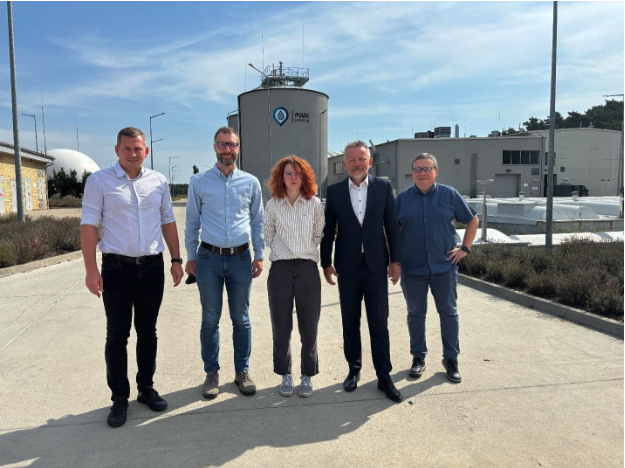New Urban Wastewater Treatment Directive – opportunities and implications for Poland
Strategic context – Race For The Baltic
As part of Race For The Baltic’s new strategy, we have explored the implications and opportunities to engage with the upcoming changes in the wastewater treatment sector. This is particularly relevant from the Polish perspective, where the investment needs are among the highest in the Baltic Sea region. The Directive’s implementation presents a critical opportunity to align nutrient reduction, circular economy, and climate goals within a single framework.
Overview
The recast Urban Wastewater Treatment Directive (UWWTD) (EU) 2024/3019 entered into force on 1 January 2025. It significantly strengthens Europe’s framework for wastewater management, aligning it with the Green Deal, Zero Pollution Ambition, and the Circular Economy objectives. Member States must transpose the directive by 31 July 2027.
Key changes introduced
Lower threshold for collection and treatment: All agglomerations of 1,000 population equivalents (p.e.) or more must have collecting systems and secondary treatment by 2035 (previously 2,000 p.e.).
Stricter nutrient removal: Obligations for nitrogen and phosphorus removal are extended to smaller wastewater treatment plants (starting from 10,000 p.e. or smaller after risk assessments), introducing more demanding discharge limits to combat eutrophication.
Nature Based Solutions (NBS): A potential to apply NBS as alternatives to traditional wastewater collection and treatment systems in newly established agglomerations and for managing stormwater overflows.
Micropollutant removal (quaternary treatment): By 2045, large plants (≥150 000 p.e.) must implement advanced treatment to remove micropollutants such as pharmaceutical and cosmetic residues.
Extended Producer Responsibility (EPR): Pharmaceutical and cosmetic producers must finance at least 80% of micropollutant removal costs.
Energy neutrality: All wastewater treatment plants are required to achieve energy-neutral operation by 2045, through energy recovery and renewable energy use.
Enhanced transparency and monitoring: Stricter requirements for data collection, reporting, and public information access.
Implications for Poland
Poland faces a substantial implementation challenge under the new directive. Despite major progress since EU accession, only around 71% of urban wastewater currently meets the requirements of the old UWWTD (compared to 75.9% EU average). Additionally, over 1,000 Polish agglomerations lack wastewater collection systems, particularly in rural and peri-urban areas.
The lowered threshold and expanded nutrient removal obligations will require significant investment in smaller agglomerations and treatment facilities, many of which currently operate without advanced nitrogen or phosphorus removal. This has particular relevance for the Baltic Sea catchment, where nutrient leakage remains a key driver of eutrophication.
Upgrading to meet the new standards will demand large-scale financing and capacity-building. Poland’s wastewater sector—already constrained by fragmented local ownership, limited municipal budgets, and outdated infrastructure, must mobilize EU funds, national programmes, and private capital to meet the 2035–2045 deadlines.
Methodological and management challenges
The new system for defining agglomerations and the requirement to perform comprehensive risk assessments introduce additional complexity for national and local authorities. These changes necessitate a more stringent end-to-end (E2E) approach to wastewater governance, integrating planning, data collection, infrastructure design, and operational management into a unified framework. Without this holistic approach, both compliance and the intended environmental impact risk could be undermined.
Outlook
While the new directive poses significant administrative and financial challenges, it also presents an opportunity for modernisation, improved water quality, and reduced nutrient inflows to the Baltic Sea. For Poland, aligning national implementation with catchment-based nutrient strategies and leveraging EU funding will be essential to ensure compliance and maximise environmental benefits.
Grzegorz and Aleksandra at a study visit at Jarocin WWTP.
Visit in Jarocin (PL) wastewater treatment plant
The wastewater treatment plant (60,000 p.e.) in Jarocin is one of only three facilities in Europe to have implemented an innovative Canadian technology for phosphorus recovery from both sewage sludge and its leachate. The recovered phosphorus is used to produce struvite fertilizer, which can be efficiently applied in municipal green areas.
Jarocin has integrated the phosphorus recovery system with a modernised biogas production and sludge hydrolysis process. As a result, the plant now covers 100% of its internal heat demand and up to 30% of its electricity consumption, while also producing a certified fertilizer from biogas digestate.
The facility is also exploring opportunities to become a local hub for collecting organic waste from nearby fruit and meat producers, thereby further increasing its potential for heat and electricity generation. In its current state, the Jarocin WWTP already meets many of the upcoming requirements of the Urban Wastewater Treatment Directive (UWWTD), years ahead of their legal implementation.
We believe the Jarocin WWTP represents an excellent example of efficient resource use, recycling of critical raw materials (phosphorus), and waste-free biogas production. This system appears particularly well-suited for wastewater treatment plants with a capacity of 50,000–150,000 p.e., especially in regions without heavy industrial activity.

